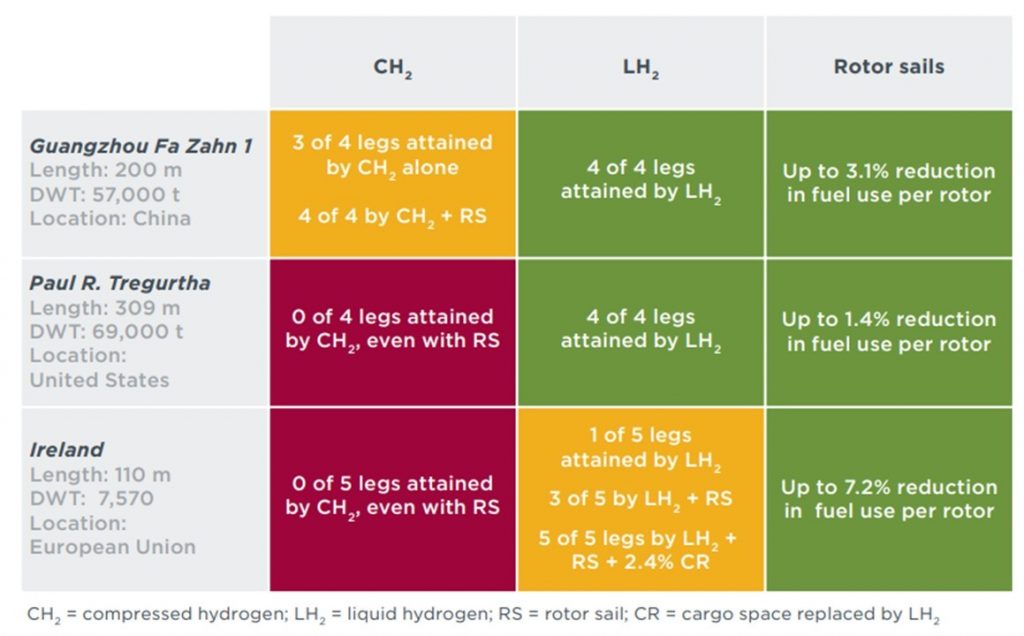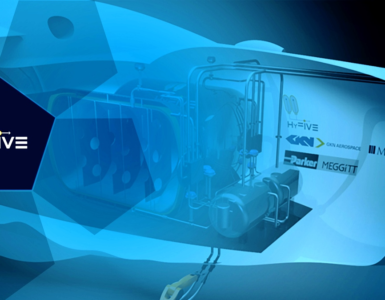ICCT – Decarbonizing bulk carriers with hydrogen fuel cells and wind-assisted propulsion: a modeled case study analysis.
Governments and industry are developing plans and policies to reduce climate pollution from all sectors, including international and domestic maritime transportation. Setting a course toward ambitious decarbonization will require confidence that new zero-emission technologies are technically feasible for ships.
This study investigates the potential of both liquid and compressed hydrogen fuel cells to replace fossil fuels for bulk carriers, including when paired with wind-assisted propulsion in the form of
rotor sails.
We modeled three bulk carriers—a 57,000 deadweight tonne (dwt) coastal dry bulk carrier sailing in China, a 69,000 dwt ore and coal carrier sailing the North American Great Lakes, and a 7,570 dwt cement carrier in northern Europe.
🔥 What about we co-host a webinar? Let's educate, captivate, and convert the hydrogen economy!
Hydrogen Central is the global go-to online magazine for the hydrogen economy, we can help you host impactful webinars that become a global reference on your topic and are an evergreen source of leads. Click here to request more details
We used 2019 Automatic Identification System (AIS) ship traffic data and weather data observations to estimate the ships’ total energy use and the energy-saving potential of rotor sails for two routes for each ship.
Each route is divided into legs. Ship energy use was estimated with ICCT’s Systematic Assessment of Vessel Emissions (SAVE) model. Across the three ships, we found benefits from the rotor sails and a range of port-to-port energy savings of 0.1% to 7.2% per rotor.
The two larger ships had lower relative savings compared to the smaller ship because the power generated by the rotor is smaller relative to the total power used by the engines.
Using liquid hydrogen (LH2), the two larger ships could complete both of their modeled routes even without the help of wind-assisted propulsion. For the Great Lakes bulk carrier— the largest ship—adding rotor sails would reduce fuel consumption and therefore fuel costs by up to 1.4% per rotor.
For the Chinese bulk carrier, savings are even larger at up to 3.1% per rotor. As a proportion of total energy use, rotor sails had the greatest energy-saving potential for the European bulk carrier and were capable of port-to-port energy savings up to 7.2% per rotor. With four rotor sails, energy savings of up to 28% or more are possible.
However, the smaller European bulk carrier does not have as much space available on board for LH2, making reliance on hydrogen more challenging for this ship than the other two. Only the shortest of the five legs could be achieved with LH2 alone.
Two other legs could be achieved using rotor sails in combination with LH2. Its two longest legs could be achieved if it replaced 2.4% of its cargo space with LH2 in combination with four rotor sails.
Using compressed hydrogen (CH2), which takes up more space than LH2 but does not need to be cryogenically stored, presents its own challenges—only the Chinese bulk carrier could use this fuel to complete its typical operations.
It could achieve three of the four legs we modeled using CH2 alone and could achieve the fourth leg with the addition of six rotor sails. The other two ships do not have enough space available to carry enough CH2 to meet their energy needs along the routes we modeled. A summary of the results of the study are presented in Figure ES-1

This research also examined the factors that affect energy savings from rotor sails. We found that energy savings vary depending on wind conditions and are sensitive to wind speed and wind direction. Apparent wind directions across the side of the ship and slightly toward the bow produce the greatest energy savings.
Energy savings are also sensitive to how quickly the rotors spin: too slow and they do not generate much thrust; too fast and they consume more energy than they save.
The size of the rotor sails also impacts performance, and we found that, all else being equal, taller rotors result in greater energy savings. Lastly, we found that cumulative energy savings
increase as the total number of rotors increases.
Ships powered by wind-assisted propulsion paired with liquid hydrogen fuel cells would generate no direct pollution. However, the hydrogen would need to be sourced from renewable energy and not fossil fuels to have climate benefits.
Rotor sails reduce the amount of fuel that ships consume and can be retrofitted on existing conventionally fueled ships to reduce fossil fuel consumption; they can also be installed on new ships, including hybrid and zero-emission vessels, to save on energy costs. Thanks for staying up to date with Hydrogen Central.
They can help ships comply with international regulations such as the Energy Efficiency Design Index and Energy Efficiency Existing Ship Index, or domestic regulations that limit the carbon-dioxide-equivalent intensity of ships.
Knowing that rotor sails can reduce energy use and emissions for new and existing ships could give governments theconfidence to raise the ambition of climate policies.
READ the latest news shaping the hydrogen market at Hydrogen Central
DECARBONIZING BULK CARRIERS WITH HYDROGEN FUEL CELLS AND WIND-ASSISTED PROPULSION: A MODELED CASE STUDY ANALYSIS, January 2022








